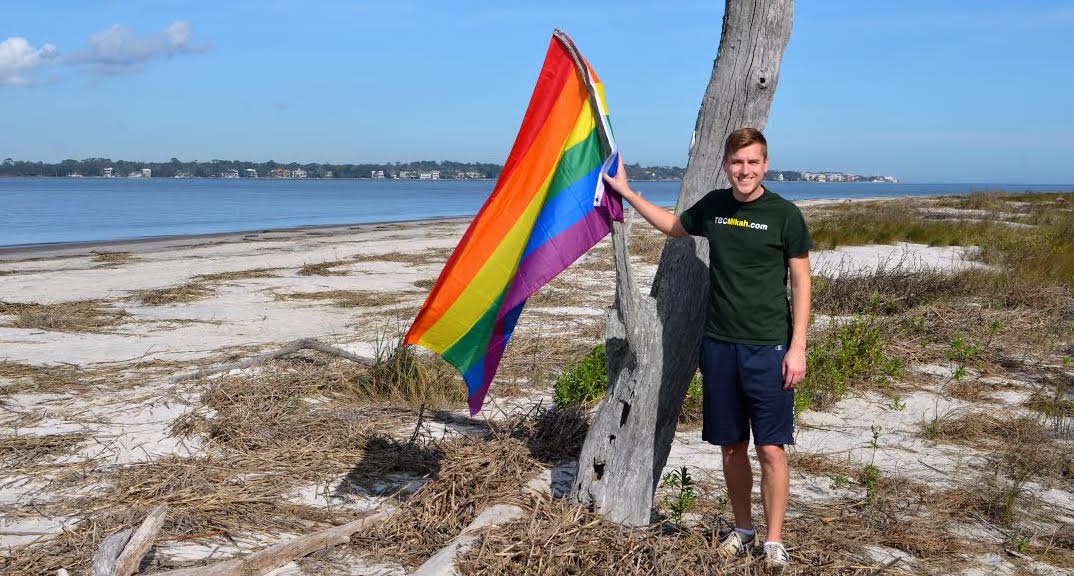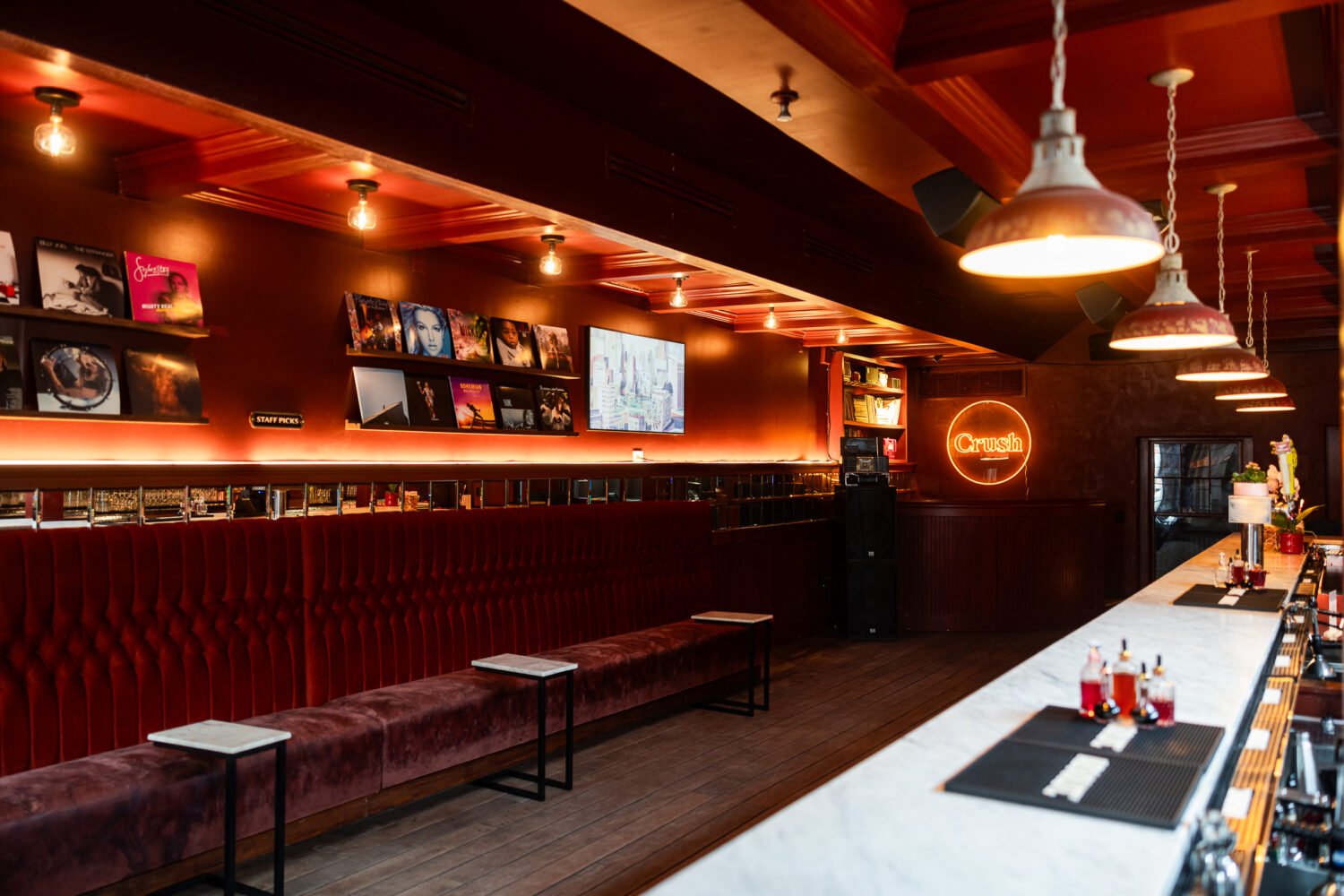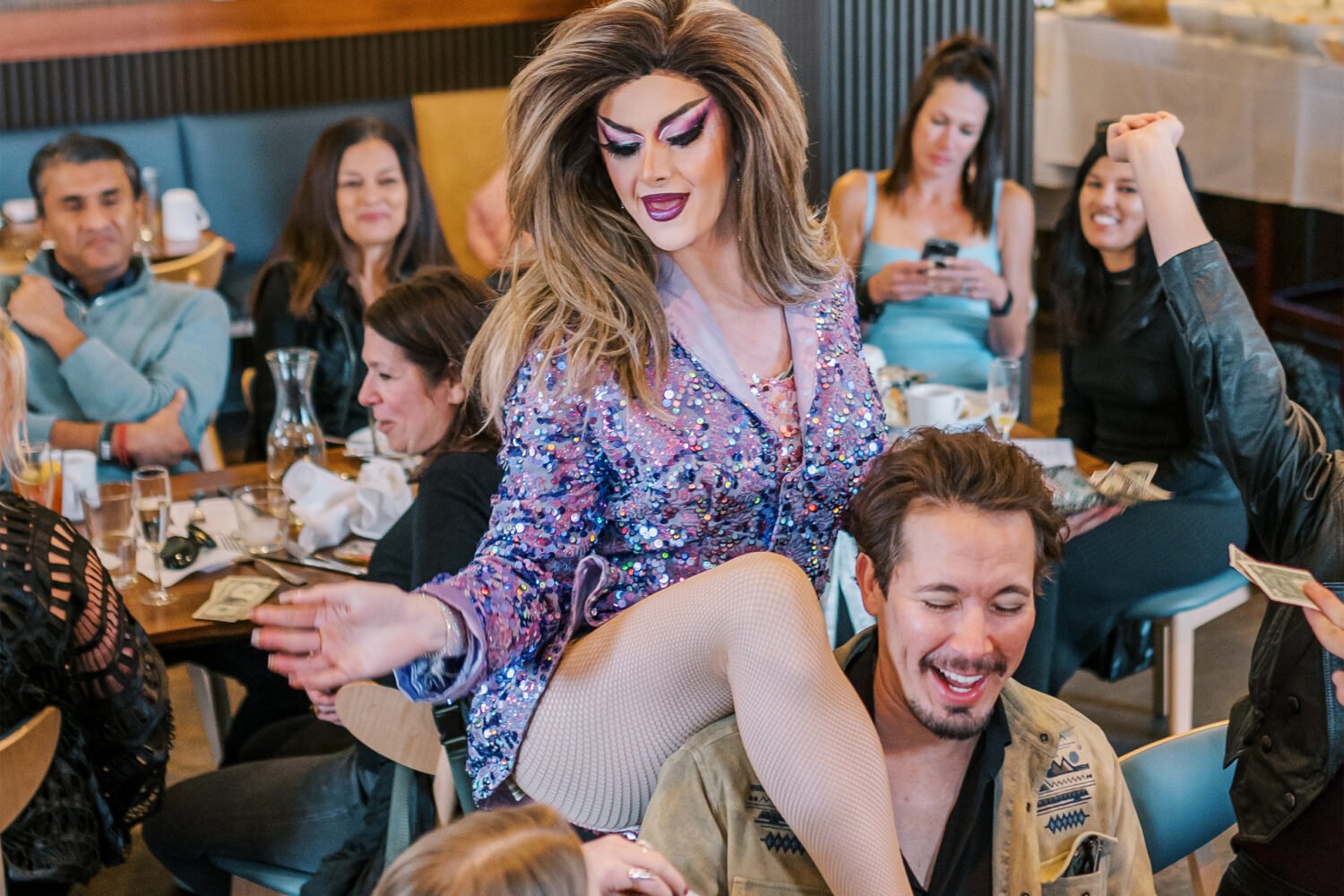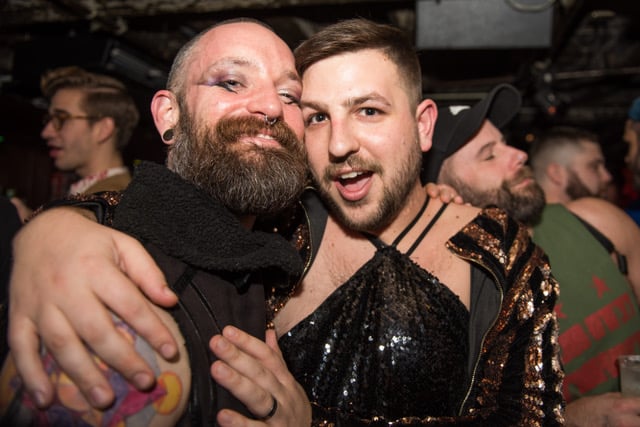For gay people who have grown up in cities or fled there for safety in numbers, spending time in the wilderness can be an intimidating prospect. However, local LGBTQ hikers and campers are challenging what it means to be an “outdoors person,” taking their pride outside to Washington’s many gorgeous public parks and trails.
Two Washingtonians, Mikah Meyer and his partner Andy Waldron (whom we profiled before they began their trip last year), are trying to become the youngest people to visit all 417 national park units. The National Park Service (NPS) reached out to Meyer, encouraging him to tell his story as part of their Find Your Park campaign. The couple’s goal is to make parks welcoming to nontraditional park users, and they hope more representation will help attract LGBTQ people as they work to make outdoors spaces and cultural institutions more inclusive.
“It’s not simply saying that all are welcome. It’s about saying, ‘Are all people safe? Are their stories being told?'” says Michael Liang, NPS visual information specialist and gay “spokesranger.”
“It’s okay to put pressure on parks, because we are supposed to serve all Americans.”
To this end, the NPS is working to identify and preserve landmarks related to gay culture, and they are training park rangers to discuss the often-hidden history and contributions of LGBTQ people at park sites. (Users have identified nearly 40 unofficial gay historical sites around DC.)
Growing up in Nebraska, Meyer says he had no gay role models to look up to except stereotypical characters on TV. Today, he still wishes there was a show like Man vs. Wild featuring an openly LGBTQ person. During his travels, Meyer tries to provide the representation he wishes he’d had as a boy.
“Most outdoor magazines advertise with straight, white couples,” Meyer says. “A lot of people ask me, ‘What do you mean gay people aren’t welcome outdoors?’ I think it goes back to that idea of: You can’t be what you can’t see. It’s hard to feel welcome when you don’t see people like you.”
He’s still cautious about where he wears rainbow attire or holds his boyfriend’s hand, however. Meyer offers this advice to gay novices venturing to new places:
“I plan ahead of time when and where I can feel safe being openly queer and when I need to be more careful,” Meyer says. “If you feel safe, if you meet people who seem like they’ll be okay with it, certainly don’t feel that you need to hide who you are in order to make others feel comfortable.”
Meyer is not the only Washingtonian trying to make the wilderness welcome to everyone.
“I started Pride Outside to get the LGBTQ community outdoors, starting in DC,” says Hannah Malvin, who also leads inclusion initiatives with the Wilderness Society. “Not everyone has grown up with a background of going outdoors. Not everyone knows where to go or what to do, what to bring, and it can be helpful to go out with a community.”
Safety concerns about looking obviously gay in remote or unfamiliar areas has kept some from considering wilderness hobbies. High-profile cases of homophobic violence (such as the lesbian couple murdered in 1996 while camping in Shenandoah) didn’t exactly alleviate worries. For some living in urban environments like DC, lack of transportation out to hiking and rock climbing spots was the biggest barrier. Since starting her group Malvin says there’s been an outpouring of interest, particularly among young women.
“A lot of the [gay] social world is built around bars and drinking,” Malvin says. “We also have higher rates of some health concerns like alcoholism and depression, so it’s nice to have an outdoor alternative to happy hour.”
Adventuring, started back in 1979, is the oldest gay outdoors club in the DC area. Besides providing canoeing, backpacking, and mountain biking skills for gay people, their mission is to challenge the public about stereotypical LGBT behavior. They’ve seen increasing success over the decades.
“In the beginning years, not as much was known about gay people and bullying and things like that. Gay people didn’t see [hiking and camping] as something we did,” says Bill Horton, who handles publicity for Adventuring. “We just met at bars and went dancing, and there weren’t really many non-nightclub activities for gays and lesbians to do.”
Adventuring makes it easy to get outside: dues are $2, carpooling is coordinated, and it’s encouraged to bring your out-of-town straight friend or your elderly (but spry) aunt along on a hike. In fact, many members are retirees. Both Pride Outside and Adventuring now have a partnership with REI at their new NoMa location to offer outdoor backpacking and camping classes targeted to LGBTQ novices. They also offer more advanced skills such as navigation for experienced folks.
“Being in a group, it can be more comfortable being affectionate with one another and not worrying about who you’re running into,” Horton says. “There’s always courage and strength in numbers. And fun!”



















